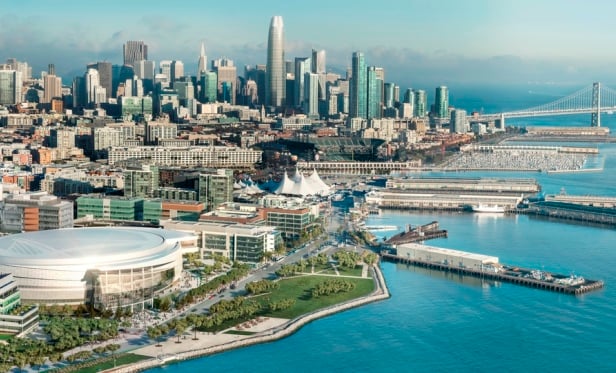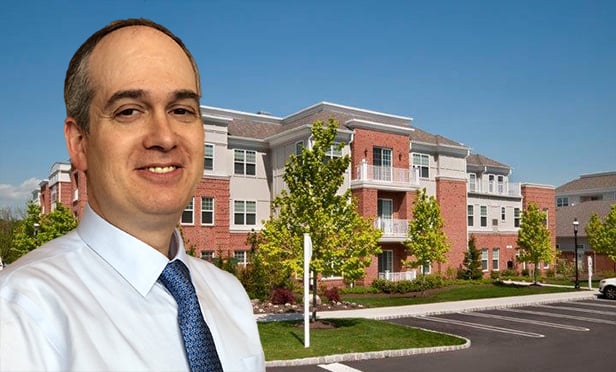WASHINGTON, DC–At one time Tim Bakos, principal at the DC office of Perkins+Will, believed that 3D printing, or additive manufacturing as it is also called, would remake the way architects and designers worked with each other. But in the last few months he has changed his mind: that honor will go to virtual world technology. “I think it has already outpaced what 3D printing can do,” he tells GlobeSt.com.
Bakos has come to his conclusion some two months after the company launched its Collaborative Area for Virtual Exploration, or The CAVE. It is a a room that integrates VR immersion tools into Perkins+Will's design process so that you can see and 'feel' if you will, the resolution of the buildings — their complex shapes and forms — as the project unfolds.
Bakos said it is too soon to give ROI metrics for the technology, at least in this particular industry. “The life cycle of the design stage can be six months to a year.”
But the technology is providing clear benefits in internal collaboration and customer outreach. We spoke with Bakos about his experiences using CAVE to find out more. Following are excerpts from the interview.
Tell me more about the mix of technology you are using for CAVE.
We pair a HTC Vive headset with Autodesk's Live, A360 or IrisVR's Prospect viewers. We've configured our design process so we can use these tools with a one-button click from Autodesk Revit. This way users are able to jump off at any point from our evolving model files into virtual worlds.
Users also includes clients?
Yes. CAVE gives clients more access to the design process — they can provide input before we have completed what it is we are proposing. The solutions we put forward after that are closer to what they want. This is very useful in the early phases of a project. The client can see how the building might look from certain key intersections or the cap of the building from a certain vantage point.
Do you find there is 'too much' input at this point? Sometimes that can be overwhelming at the beginning of a project?
What we do is help the stakeholder recognize at what point in the process we are, so expectations are realistic. We explain that, for example, at a certain point they will only see gray buildings and not the red bricks and shiny glass they might otherwise be expecting. We have found that when you do render materials and the finish too early, you run risk of them not being precise enough. It is better to wait towards the end for those details.
Would you consider yourself to be an early adopter of this technology, at least in the design phase?
No, others are using it perhaps with different technology. Being a larger firm, though, allows us to explore the tech compared with our smaller competitors.
How long before VR becomes a mainstay in the industry, in your opinion?
I think within the next 12 months this technology will take over the majority of the market and have evolved twice in the interim. It will be far more pervasive throughout the team too.
Is CAVE your secret sauce?
No, only because it is not a secret we are using it — although some people wish I would keep it more to myself. But we are open about it for a couple of reasons. Besides using it with clients, we are telling prospective hires about it. We need to stay on top of technology to recruit the best talent in architecture.
WASHINGTON, DC–At one time Tim Bakos, principal at the DC office of Perkins+Will, believed that 3D printing, or additive manufacturing as it is also called, would remake the way architects and designers worked with each other. But in the last few months he has changed his mind: that honor will go to virtual world technology. “I think it has already outpaced what 3D printing can do,” he tells GlobeSt.com.
Bakos has come to his conclusion some two months after the company launched its Collaborative Area for Virtual Exploration, or The CAVE. It is a a room that integrates VR immersion tools into Perkins+Will's design process so that you can see and 'feel' if you will, the resolution of the buildings — their complex shapes and forms — as the project unfolds.
Bakos said it is too soon to give ROI metrics for the technology, at least in this particular industry. “The life cycle of the design stage can be six months to a year.”
But the technology is providing clear benefits in internal collaboration and customer outreach. We spoke with Bakos about his experiences using CAVE to find out more. Following are excerpts from the interview.
Tell me more about the mix of technology you are using for CAVE.
We pair a HTC Vive headset with Autodesk's Live, A360 or IrisVR's Prospect viewers. We've configured our design process so we can use these tools with a one-button click from Autodesk Revit. This way users are able to jump off at any point from our evolving model files into virtual worlds.
Users also includes clients?
Yes. CAVE gives clients more access to the design process — they can provide input before we have completed what it is we are proposing. The solutions we put forward after that are closer to what they want. This is very useful in the early phases of a project. The client can see how the building might look from certain key intersections or the cap of the building from a certain vantage point.
Do you find there is 'too much' input at this point? Sometimes that can be overwhelming at the beginning of a project?
What we do is help the stakeholder recognize at what point in the process we are, so expectations are realistic. We explain that, for example, at a certain point they will only see gray buildings and not the red bricks and shiny glass they might otherwise be expecting. We have found that when you do render materials and the finish too early, you run risk of them not being precise enough. It is better to wait towards the end for those details.
Would you consider yourself to be an early adopter of this technology, at least in the design phase?
No, others are using it perhaps with different technology. Being a larger firm, though, allows us to explore the tech compared with our smaller competitors.
How long before VR becomes a mainstay in the industry, in your opinion?
I think within the next 12 months this technology will take over the majority of the market and have evolved twice in the interim. It will be far more pervasive throughout the team too.
Is CAVE your secret sauce?
No, only because it is not a secret we are using it — although some people wish I would keep it more to myself. But we are open about it for a couple of reasons. Besides using it with clients, we are telling prospective hires about it. We need to stay on top of technology to recruit the best talent in architecture.
Want to continue reading?
Become a Free ALM Digital Reader.
Once you are an ALM Digital Member, you’ll receive:
- Breaking commercial real estate news and analysis, on-site and via our newsletters and custom alerts
- Educational webcasts, white papers, and ebooks from industry thought leaders
- Critical coverage of the property casualty insurance and financial advisory markets on our other ALM sites, PropertyCasualty360 and ThinkAdvisor
Already have an account? Sign In Now
*May exclude premium content© 2024 ALM Global, LLC, All Rights Reserved. Request academic re-use from www.copyright.com. All other uses, submit a request to [email protected]. For more information visit Asset & Logo Licensing.









